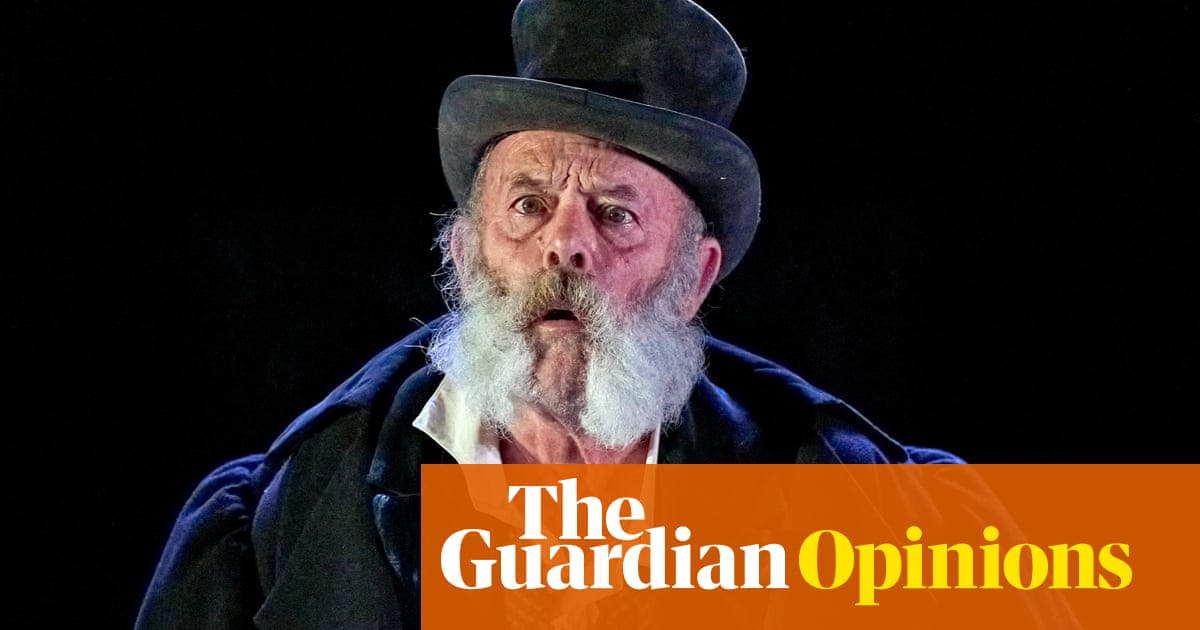
Has Charles Dickens’ charming little Christmas story become a cynical theatrical franchise? Mark Gatiss’s adaptation, first seen in 2021, is back at Nottingham Playhouse (and transfers to London later this month), this time with Keith Allen as the “tight-fisted” money-lender who finds salvation through three ghosts. Meanwhile, Jack Thorne’s version, at London’s Old Vic, has grown into a festive juggernaut boasting a starry alumni of Scrooges including Rhys Ifans, Andrew Lincoln and Paterson Joseph (this year it’s Christopher Eccleston) and is in its seventh year.
This concept, of a returning production with a revolving door of Scrooges, might be mistaken as a bankable, modern-day enterprise but perhaps it was ever thus. Published as a novella the week before Christmas in 1843, all first editions of the book were sold out by Christmas Eve. A year on, there were nine productions on stage. Dickens wrote numerous other festive stories but this one stuck.
Why? Because, as GK Chesterton noted, it brings comfort. There is a childlike pleasure in hearing a good bedtime story retold, the kind that gives us the chills before warming us again with its happy ever after. In his preface, Dickens spoke of it as a “ghostly little book” which he hoped would haunt readers pleasantly. It is also a religious lesson in Christian charity, a secular story of personal redemption and a reminder that however old and irascible we become we can – just – save ourselves from living the wrong life.
Inspired by Dickens’ visit to a ragged school to observe street children, the story rages against poverty but advocates philanthropy as its solution, urging benevolence in rich misers like Scrooge. This might today be seen as Tory paternalism rather than a call for more radical social overhaul and Dickens’ unwillingness to question the system, and upturn it, is perhaps why the likes of Chesterton felt it to be a comfort.
Either way, the question is not so much why A Christmas Carol is staged so often as what makes a good staging for now. Scrooge is the irredeemable redeemed man and a blueprint for many grumpy miseries. We can see him in Jack Nicholson’s Schmidt and Carl Fredricksen from Pixar’s Up – desolate men who are both repellent in their meanness and heartbreaking in their loneliness. We need to feel Scrooge’s horror as he blinks awake after years of inner deadness for Dickens’ story to work its magic.
I am not sure Allen plays it quite right. His Scrooge is a vital, officious man with long white whiskers and a steel ruler brandished against those who implore charity from him. Allen’s delivery is crisp, verging on droll, and he amuses at the start but remains one note and is strangely sidelined in his own story. The challenge of the role is to take us on Ebenezer’s emotional journey into the past, present and future but the production stays grounded, its emotional arc flat, that “merry Christmas to us all” ringing hollow.
In the production’s programme, Gatiss says the tale’s “status as a ghost story has been somewhat undervalued”. His gothic imagination is a good fit and this version has white vapours, invisibly galloping horses and horror movie lighting. But if the imagination around the three ghosts is key to the success of any staging, they seem saggy and predictable here (the past is a Victorian type, the present an embodiment of Christmas and the future a black hooded figure with a Darth Vader growl).
There is a bigger argument to be had around why the same old stories come around, again and again, and whether it is at the expense of new ones. It can feel like safe, bland programming which has reached red alert in parts of the West End where well-loved books or films are wheeled out as musicals. Retellings bring an important sense of ritual. But how about bringing greater, and sharper, imagination to make them delightfully different?
The Old Vic’s iteration is undoubtedly handsome and heartwarmingly Christmassy, with a lovely flurry of fake snow across the auditorium and mince pies all round. But it is a polished machine that does exactly what Chesterton suggested and nothing more imaginative, never pushing at the edges of the story to surprise us.
That’s why Piers Torday’s version, at Wilton’s Musical Hall in London in 2019, featuring Ebenezer’s sister Fan (who dies in the novella) as a female Scrooge, worked so well. There is originality and entertainment, too, in those shows that go down the comic route such as the mashup A Sherlock Carol, which returns this year to London’s Marylebone theatre.
Morgan Lloyd Malcolm’s musical adaptation at the Rose theatre in London last year was a masterclass in making the old new. It interrogated the politics in Dickens’ story, not only around gender but social responsibility in the face of inequality. Challenges to Dickens’s notion of charity and individual philanthropy were left hovering in the mind. Amping up the ghostliness, the script examined death and grief in an unflinching way. That production proved that an over-exposed story can become startlingly new in the right hands. If there must be nine – probably more – versions of A Christmas Carol this year, can they take a few more imaginative risks?












